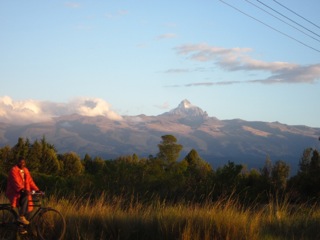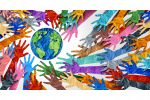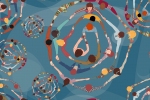January 24, 2014
How Did You Know What to Do?
 A few days after my arrival in Nanyuki, Kenya, my friend Carol Erickson and I stopped by the chapel on the grounds of the British-owned Cottage Hospital to visit with a few friends she hadn’t seen since her return to Africa. When she relayed to them the details about a recent trip to the District Children’s Officer in Nanyuki to report the alleged abuse of staff member Pauline’s three children, living up-country with her Samburu husband, Jill asked Carol:
A few days after my arrival in Nanyuki, Kenya, my friend Carol Erickson and I stopped by the chapel on the grounds of the British-owned Cottage Hospital to visit with a few friends she hadn’t seen since her return to Africa. When she relayed to them the details about a recent trip to the District Children’s Officer in Nanyuki to report the alleged abuse of staff member Pauline’s three children, living up-country with her Samburu husband, Jill asked Carol:
“How did you know what to do?”
“I didn’t,” Carol answered in the matter-of-fact way that is a hallmark of Imara’s 38-year-old director.
Fourteen months since the opening of Imara House just north of Nanyuki, in Kenya’s Laikipia district, Carol and her staff have come a long way. They are housing eight teen mothers and seven babies (Sarah is due in three weeks), all of whom are now benefitting from a safe, clean home, three meals a day, and an education that will allow the girls to receive a secondary school diploma.
To someone coming from the US, where public education is accessible to all, this may not sound impressive. But the girls who live at Imara House have come from desperate circumstances. Many were forced into early “marriages” and not given even a primary school education, since their value was to cook, clean, tend the animals, and bear children. Others were raped or taken advantage of and left to fend for themselves. One girl discovered that forced sex with her abuser left her testing positive for HIV/AIDS.
It’s hard to understand a culture where, in tribal areas, women are considered property. Nor is it easy to grasp the devastation this mindset wreaks on these lovely young women.
This is the work of Imara.
During my two-week stay with Carol, Reuben, and Jayne (Imara’s able and dedicated Kenyan staff), there was little time to process all that I was seeing and experiencing. Carol was too busy tending to crying babies, buying provisions in Nanyuki, such as medications to prevent the chickens from contracting Newcastle’s disease; taking the girls to the Saturday market for fresh mangos, plums, kale, and tomatoes and asking them to help bargain for a good price; making an emergency visit to Cottage Hospital with Sarah, eight months pregnant and complaining of abdominal pains; baking a birthday cake for Sofia and for her one-year-old daughter Sharon. But on my way back home, we were able to spend a few hours at the Mennonite Guest House in Nairobi, where I had the chance to find out how an elementary school teacher from Minneapolis knows how to manage the daily obstacles thrown in her path while running a rescue center for girls in Kenya.
“Often I don’t know what to do,” she confessed. “But people just seem to show up exactly when I need them.”
Imara hopes to buy land on property adjacent to Ol Pajeta game preserve, south west of Nanyuki. During my stay she bought plants that will serve as a floral hedge for the new compound. She also wants to buy fruit trees: mango, plum, and papaya. But she didn’t know where to buy them, which conditions are best for planting, or even what to expect to pay.
On our drive south to Nairobi at the end of my stay, Carol raised this concern with our matatu driver, Steven. Turns out he is from Meru – a town north of Nanyuki known for its rich soil and abundant fruit trees. He knew exactly how to advise Carol and willingly offered to help the incoming team from Darnestown, Maryland when they arrive. Coincidence? Or, to quote Carol, was this another “God moment?”
The last morning of my stay, Felister led us in devotions, which included the passage from Matthew in which Jesus bids Peter to walk on water. It seems to me that running a rescue center for teen mothers in Africa requires this kind of faith – a faith I witnessed daily and from which I expect to draw sustenance long after my return home.
Read Barbara's first two blogs about her journey to Kenya and Imara House here and here.





